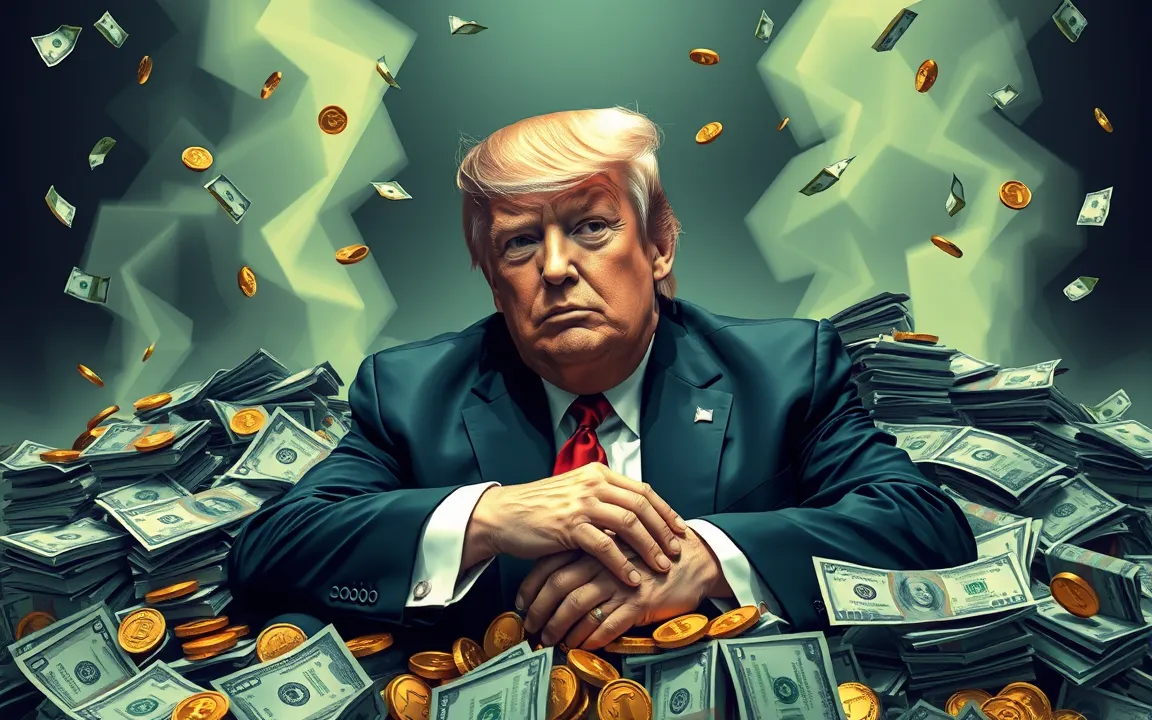Donald Trump set to open the US retirement market to crypto investments

Donald Trump’s administration is preparing to sign an executive order that could radically transform the US retirement landscape by opening the country’s $9 trillion 401(k) market to cryptocurrencies, gold, private equity, and other alternative assets.
The move—confirmed by three sources cited in the Financial Times report—would represent the most significant regulatory overhaul for retirement savers in decades.
It is expected to unlock a wave of financial innovation in retirement planning, while also introducing new risks to how Americans manage their long-term savings.
Trump’s crypto-friendly campaign strategy goes mainstream
During his 2024 presidential campaign, Trump campaigned heavily on a promise to unshackle the cryptocurrency industry, blaming previous administrations for “overly harsh regulations” and describing the crypto sector as instrumental to his return to the White House.
Now, that rhetoric is turning into regulatory action aimed at deeply integrating digital assets into mainstream American finance.
A White House spokesperson told the media that “President Trump is committed to restoring prosperity for everyday Americans and safeguarding their economic future,” but emphasised that “no decisions should be deemed official, however, unless they come from President Trump himself”.
What will the executive order change for 401(k)s?
The new directive is expected as soon as this week. It will instruct Washington’s financial regulators and the Department of Labor to open the doors on 401(k) accounts—America’s most popular retirement saving vehicle—to a broad spectrum of investments not previously available to most savers.
Assets that could soon be permitted include:
- Cryptocurrencies such as Bitcoin, Ethereum, and stablecoins
- Precious metals like gold
- Private equity, including funds tied to buyouts, private loans, and infrastructure projects
Currently, almost every dollar invested in employer-sponsored 401(k) plans flows only into public stocks and bond mutual funds.
If enacted, the shift would represent a sea change in retirement planning, providing millions of Americans access to assets traditionally reserved for institutional or ultra-wealthy investors.
Accelerating the mainstream adoption of crypto—and risk
Trump’s executive order would accelerate his administration’s push to bring crypto investing into the mainstream.
His government has recently relaxed several regulatory enforcement actions targeting major cryptocurrency exchanges, setting a more industry-friendly tone.
Congress also recently passed a set of crypto-related bills supported by Trump, further reflecting how the administration seeks to support digital assets.
Trump’s own family has become active in the space: Trump Media & Technology Group recently announced more than $2 billion in digital asset purchases and a slew of token launches tied to brand expansion1.
Additionally, in May, the Department of Labor reversed a Biden-era rule that discouraged 401(k) managers from including cryptocurrency options in their menus, laying the groundwork for the coming changes.
Implications for Wall Street, private equity, asset managers, and partnerships
The move is poised to benefit the world’s largest private capital groups—such as Blackstone, Apollo, and BlackRock—all of which are seeking to funnel ordinary retirement savings into higher-fee, less liquid alternative investments.
The executive order is expected to direct officials to create a regulatory “safe harbour”: This would help shield employers and asset managers from legal risk if these riskier private investments are included in 401(k) menus.
Private capital firms believe tapping even a fraction of the 401(k) system could drive hundreds of billions of dollars in inflows:
- Blackstone has joined forces with Vanguard to distribute alternatives
- Apollo and Partners Group are expected to offer products to Empower, a top plan sponsor
- BlackRock is working with Great Gray Trust to integrate private markets into retirement systems.
Larry Fink, CEO of BlackRock, recently highlighted the long-term motivation: As public markets shrink, access to private assets can help close the return gap between pensions and retail savers, citing potential for up to 15% higher returns over time with broader alternatives access.
Weighing the opportunities—and the downsides
Proponents believe the changes will expand the menu of investment choices for retirement savers, offer upside potential, and enable ordinary investors to capture returns once reserved for institutional players.
However, critics warn that these benefits come with significant risks:
- Higher fees than standard index funds, often opaque to average savers
- Lower liquidity, making it harder to access cash in emergencies
- Valuation opacity, as private assets aren’t marked-to-market daily like public stocks
- Greater risk of losses, especially in complex or leveraged funds
While Wall Street is enthusiastic, many investor advocates urge caution, noting that the complexity of these investments may not be fully understood by most Americans, potentially leaving workers exposed to new types of losses in pursuit of higher returns.
How will this reshape retirement?
If the executive order and follow-on actions are fully implemented, America’s retirement savings industry could experience its most dynamic period of innovation—and volatility—in living memory.
Every change will have a ripple effect throughout the finance industry, reshuffling the lineup of winners and losers and potentially redefining the way future generations build wealth.
The moves also reinforce Donald Trump’s vision: a more open and deregulated path for digital assets, with the US playing a leading role in global crypto adoption.
But with nearly $9 trillion at stake, analysts warn the road ahead is long—and that savers should proceed with caution as the era of alternative assets unfolds.
The post Donald Trump set to open the US retirement market to crypto investments appeared first on Invezz



